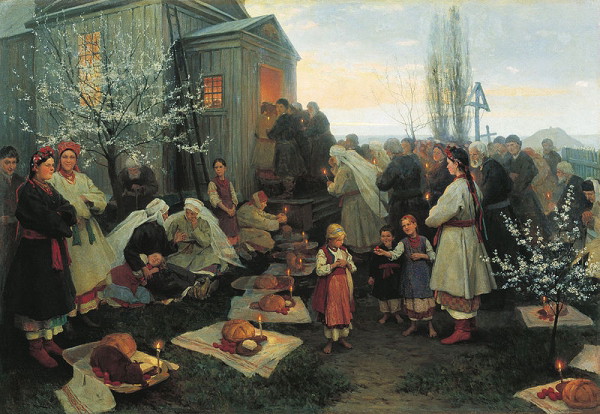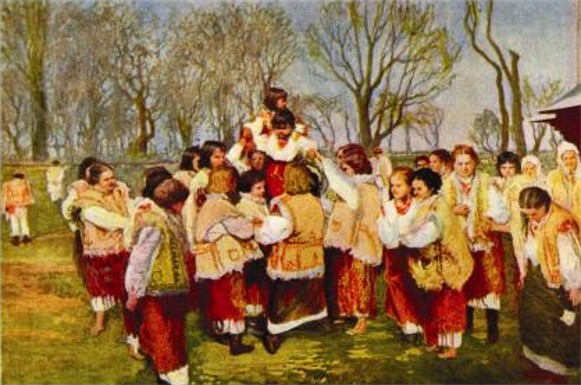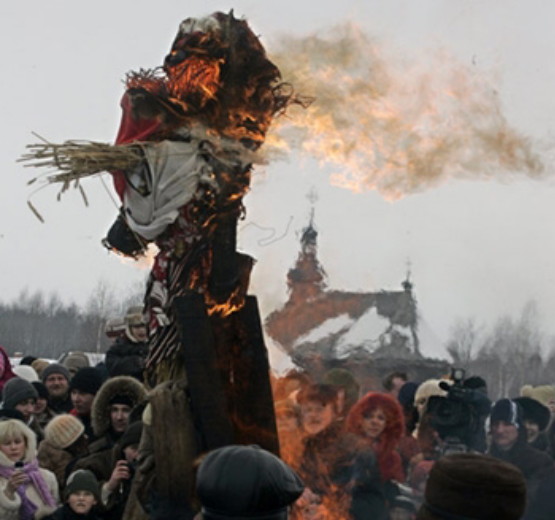Spring rituals
Spring rituals [весняні обряди; vesnyani obriady]. Traditional folk rituals practiced in the spring, from the equinox (20–21 March) to the summer solstice (21–22 June). Originally these rituals were believed to possess magical powers that ensured a bountiful harvest and fertility in domestic animals. The ritual cycle began with the rite of provody (bidding winter farewell and welcoming spring), just before the beginning of Lent. Winter was usually personified by minor deities (Kostrub, Morena, Smertka, or Masliana) effigies of which were burned or drowned ceremonially. Spring was personified by a young girl crowned with a wreath and holding a green branch in her hand. She was the central figure in the ritual games, dances, and folk songs (see Vesnianky-hahilky). The arrival of migratory birds signaled the beginning of the spring festival called Stricha (from ‘greeting’). On the Feast of the 40 Martyrs (22 March [9 March OS]) bird-shaped buns called zhaivoronky (larks) were baked and tossed into the air by children and told to bring spring with them. The largest number of agrarian rituals was designated for the Lenten period and Easter. Their magical meaning is clearest in the ritual first sowing, the first release of livestock to pasture (on Saint George's feast), and the decorating of fields and farmhouses with green branches (see Rosalia).
BIBLIOGRAPHY
Voropai, O. Zvychaiï nashoho narodu, vol 1 (Munich 1958)
Krut’, Iu. Khliborobs’ka obriadova poeziia slov'ian (Kyiv 1973)
Sokolova, V. Vesene-letnie kalendarnye obriady russkikh, ukraintsev i belorusov XIX–nachalo XX v. (Moscow 1979)
Mykola Mushynka
[This article originally appeared in the Encyclopedia of Ukraine, vol. 4 (1993).]


